A trip to Hamrapur village, the epicentre of Pen’s Ganesha idol-making industry, reveals the uphill task this government faces to convince PoP murti makers raking in lakhs to shift to costly, heavy, fragile and impractical shaadu maati
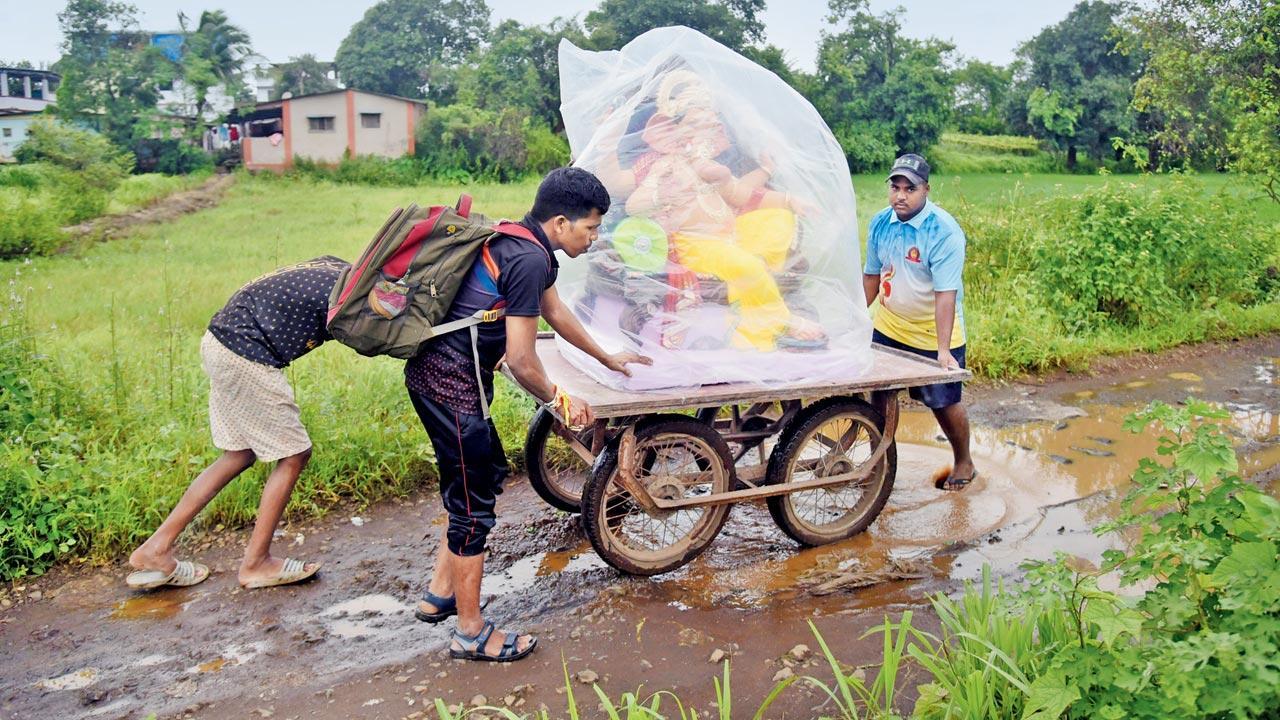
A group of boys push a cart with a Ganesh idol from a Hamrapur workshop. The estimated value of Pen taluka’s idols industry is R100 crore. Pic/Sameer Markande
Hamrapur, PEN: A winding road off the Mumbai Goa highway, sandwiched by shrubberies, leads us into a village where Lord Ganesha manifests in a variety of avatars. Every home has an idol sculptor or artisan. And every bend boasts of an idol-making workshop. At 9.30 am, it’s well into a busy day with karigars giving final touches to the last lot of Ganesh murtis that will leave this week for the festivities that kick off from August 31. Hamrapur, a three-hour drive from Mumbai, is among four villages, including Johe, Dadar Sagari and Kalave, in the Pen taluka of Raigad district, that form the heart of the state’s Ganesh Chaturthi celebrations. Every year, lakhs of idols leave from here, finding pride of place in people’s homes and sarvajanik pandals. “Not just in India, our idols go to the UK and US, Australia, the Arab countries and of late, Mauritius too,” a local artisan, tells us. With 450-plus workshops, Hamrapur is the epicentre of this business, bringing in crores annually into the under-developed village. It’s a Rs 100-crore industry in Pen, local journalist Deepak Shinde claims, although necessities like electricity still elude its residents.
Hamrapur, PEN: A winding road off the Mumbai Goa highway, sandwiched by shrubberies, leads us into a village where Lord Ganesha manifests in a variety of avatars. Every home has an idol sculptor or artisan. And every bend boasts of an idol-making workshop. At 9.30 am, it’s well into a busy day with karigars giving final touches to the last lot of Ganesh murtis that will leave this week for the festivities that kick off from August 31. Hamrapur, a three-hour drive from Mumbai, is among four villages, including Johe, Dadar Sagari and Kalave, in the Pen taluka of Raigad district, that form the heart of the state’s Ganesh Chaturthi celebrations. Every year, lakhs of idols leave from here, finding pride of place in people’s homes and sarvajanik pandals. “Not just in India, our idols go to the UK and US, Australia, the Arab countries and of late, Mauritius too,” a local artisan, tells us. With 450-plus workshops, Hamrapur is the epicentre of this business, bringing in crores annually into the under-developed village. It’s a Rs 100-crore industry in Pen, local journalist Deepak Shinde claims, although necessities like electricity still elude its residents.
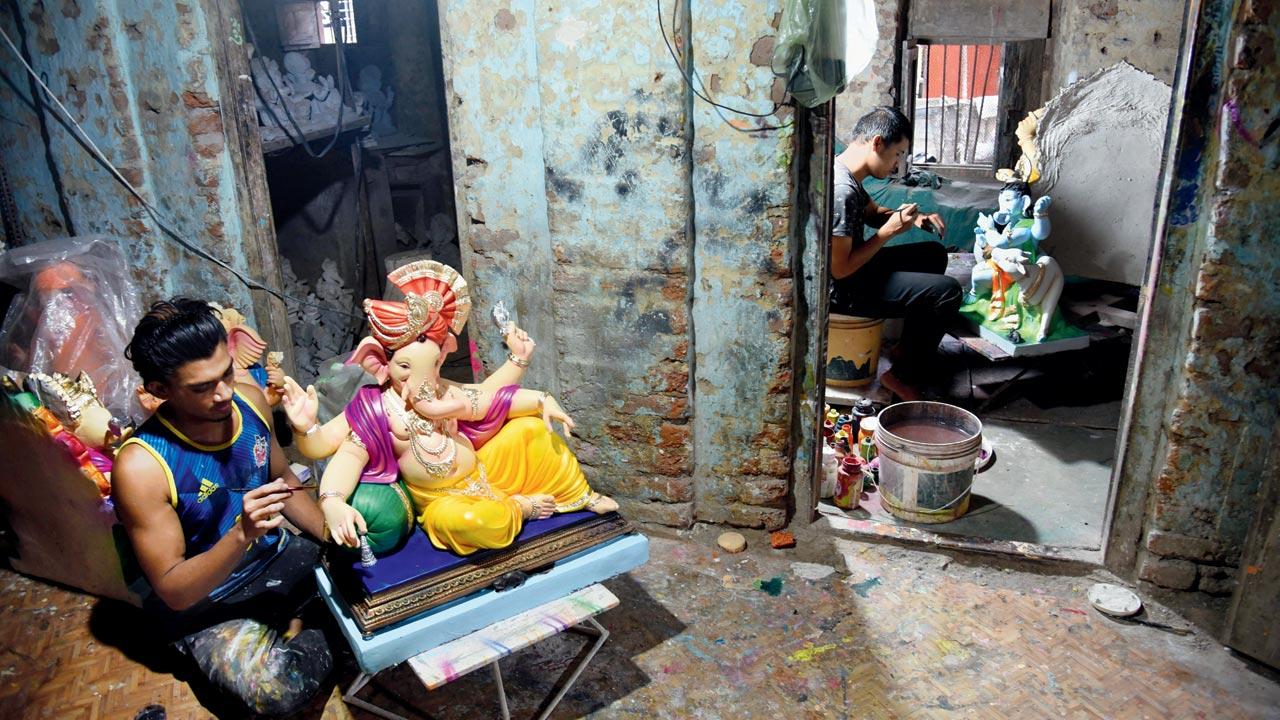 A sculptor gives finishing touches to a PoP idol at a workshop in Hamrapur, Pen. Pics/Sameer Markande
A sculptor gives finishing touches to a PoP idol at a workshop in Hamrapur, Pen. Pics/Sameer Markande
It’s been an uncertain last few years for the karigars of this village, with members of the local idol makers’ associations fighting it out in court, seeking relief from the ban on Plaster of Paris (PoP) idols. The Central Pollution Control Board had notified guidelines for idol immersion in 2010, which were revised in 2020, banning PoP idols, and the use of thermocol and plastic completely. In June the same year, when cases of COVID-19 began to peak, the Uddhav Thackeray-led Maha Vikas Aghadi government had appealed to Ganpati mandals to scale-down festivities, limiting the height of the idols to five feet. The ban on PoP was postponed for a year, keeping in mind the livelihood of karigars. The following year, in August 2021, just a few weeks before the festival, the Nagpur bench of the Bombay high court granted relief to the idol makers “to sell these idols only as PoP objects and not as idols” and on condition that the petitioners would inform the buyers that they are not intended for worship or immersion. While idol makers negotiated this judgement, their PIL in the Supreme Court was finally quashed in June, with the division bench noting “that the matter [banning PoP idols] had already been decided by the National Green Tribunal and the court had upheld the order”.
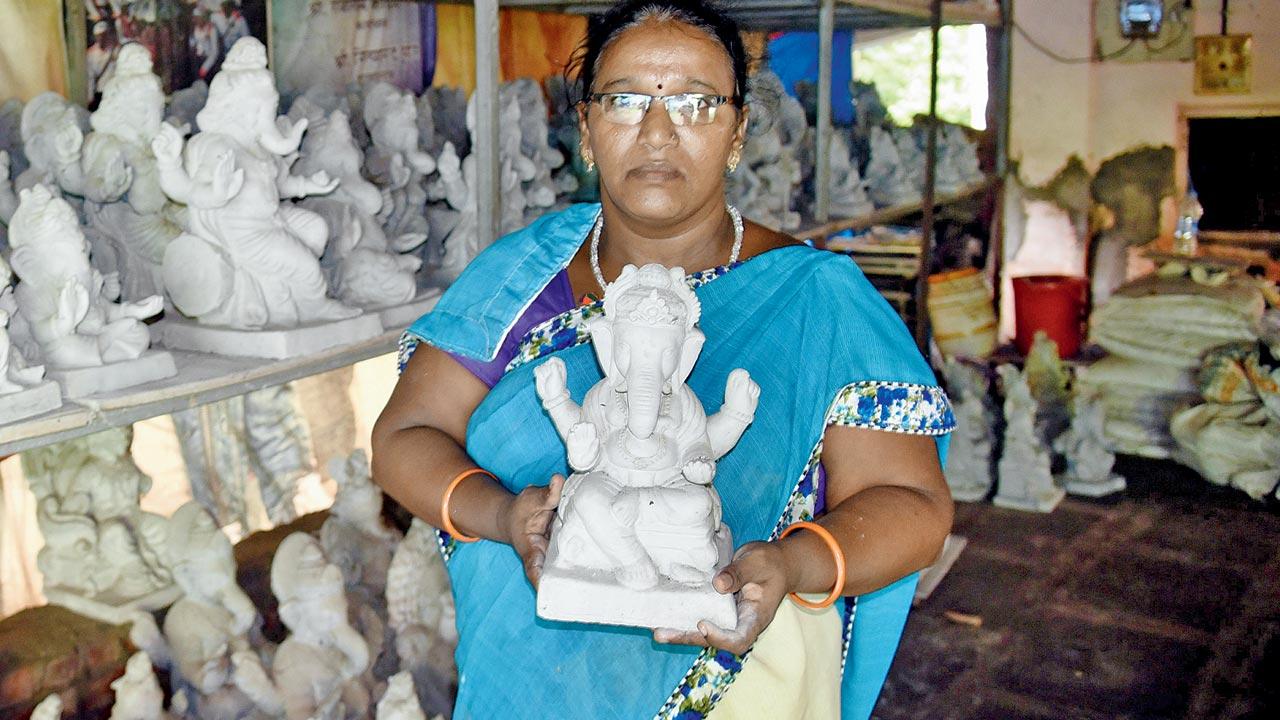 Sushma Deepak Mandlekar, a mother of two, who lost her husband five years ago, has barely managed to sell any of the 300-odd clay idols at her workshop-cum-home. She had taken a loan of Rs 2 lakh from the bank to buy raw materials. “I have to pay Rs 40,000 to the bank with interest, and the date is nearing, but I don’t have the money,” she says
Sushma Deepak Mandlekar, a mother of two, who lost her husband five years ago, has barely managed to sell any of the 300-odd clay idols at her workshop-cum-home. She had taken a loan of Rs 2 lakh from the bank to buy raw materials. “I have to pay Rs 40,000 to the bank with interest, and the date is nearing, but I don’t have the money,” she says
While, in Mumbai, the Brihanmumbai Municipal Corporation (BMC) had issued a notice on the PoP ban, it was retracted within 10 days, with the caveat that these idols would be immersed only in artificial lakes. It further stated that the ban on PoP will be implemented from 2023. The biggest relief came late July from CM Eknath Shinde, who lifted the height restrictions on idols, while adding that the state government would be setting up a committee to find out eco-friendly solutions to the PoP-make. “It’s only then that work picked up pace in our workshop,” says Sanjay Vasudeo Patil, a petitioner in the case, and president of Uttkarsh Mandal, Hamrapur, who represents the idol makers. For some like Sachin Bhagat, who also runs a hole-in-the-wall Chinese eatery, this is the busiest season he has experienced in years. The Bhagats have been in the idol-making business for three decades. “We usually start work by January, but this time, due to the uncertainty around PoP idols, we decided to take it slow. We began taking orders only after [CM] Shindeji gave the nod. It was so difficult to get the maal [raw materials], because everyone suddenly started working at a frenetic pace,” says Bhagat, adding that most of his Ganesh idols this year, are below five feet.
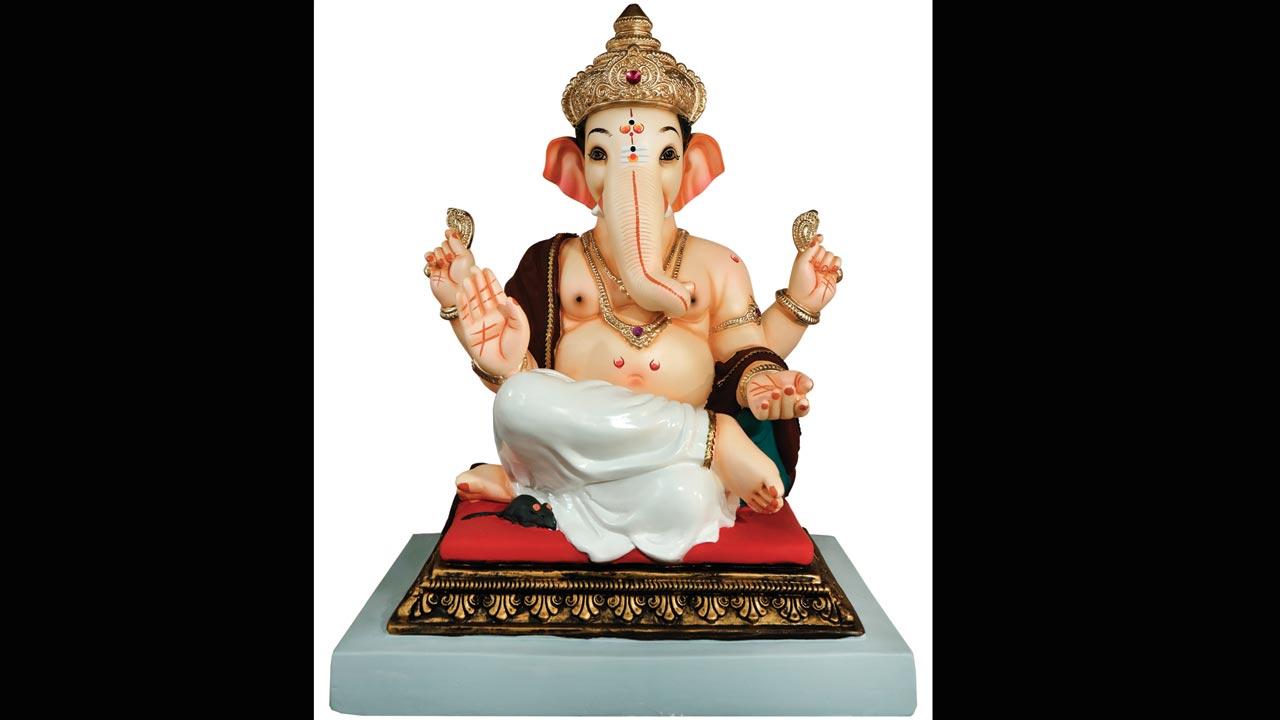
The public celebration associated with Ganeshotsav in Maharashtra is the gift of Indian nationalist leader Bal Gangadhar Tilak (Lokmanya Tilak), who according to Dr Anita Rane-Kothare, head of department of Ancient Indian History, Culture and Archaeology, St Xavier’s College, encouraged community puja or sarvajanik mandals in the 1890s to foster unity and pride and promote swarajya. But in Hamrapaur, locals attribute the emergence of a Shiva linga along with an idol of Lord Ganesh from below the earth in Pen, over a century ago, for the region’s tryst with idol making. Patneshwar Mandir, a 15-minute ride from Hamrapur, where these murtis first “arose”, is part of local legend today, as are the karigars who found their “inspiration and calling” following this discovery.
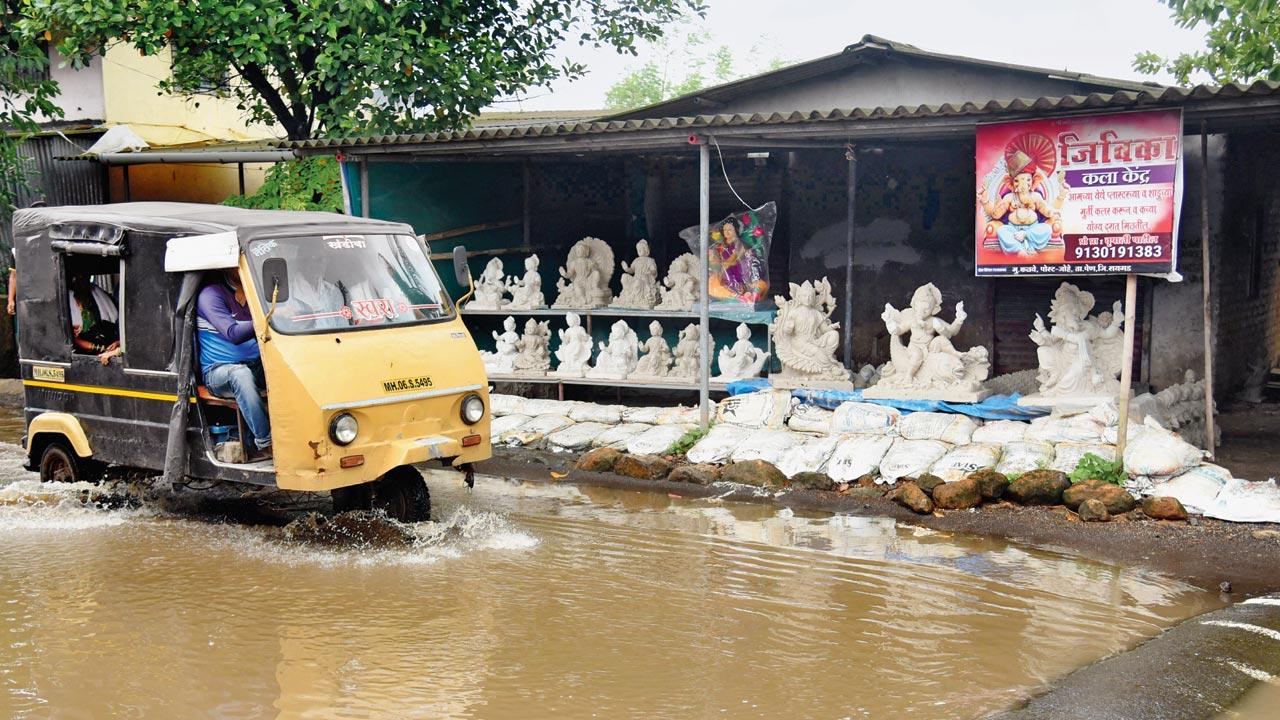 With over 450 workshops, Hamrapur is the epicentre of the idol making business in Pen, Raigad district, supporting 15,000-plus karigars and artisans
With over 450 workshops, Hamrapur is the epicentre of the idol making business in Pen, Raigad district, supporting 15,000-plus karigars and artisans
Patil admits that before PoP, it was shaadu maati (clay) that local sculptors worked with. But that changed with the size and scale of production in the early 1990s. The rise in sarvajanik mandals, and households that welcomed Ganesha annually, increased manifold, leading to a boom in business. Sanatan Sanstha, a registered charitable trust, which claims to impart spiritual knowledge, on its website claims that as per “religious scriptures, performing the ritualistic worship of a mud idol of Shri Ganesh Deity as per Dharmashastra, gives maximum spiritual benefit”. It cites references—one in the Dharmasindhu and the other, Smrutikaustubh—which states that the Ganesh idol should be of mud. Patil counters this, saying, “If that was the case, why are people not buying murtis made of shaadu maati from my workshop?”
 Deepak Shinde, Harsh Shinde, Ravikant Krishna ‘Abhay’ Mhatre, Sanjay Vasudeo Patil and Anita Sanjay Patil
Deepak Shinde, Harsh Shinde, Ravikant Krishna ‘Abhay’ Mhatre, Sanjay Vasudeo Patil and Anita Sanjay Patil
A local, Patil began working as a karigar in Hamrapur in 1998. “Before that, I was a site supervisor at a construction site in Panvel, where I’d earn R40 daily. But I’d spend all that money on commute. I couldn’t save anything,” he recalls. After learning how to make and sculpt PoP idols, Patil started his workshop. Today, he employs a staff of 25. Every year, he sells close to 50,000 murtis during the festive season, earning about R55-R60 lakh. Barring the last two years of the COVID-19 pandemic, where his business was hit and he suffered losses of up to 50 per cent, Patil says there is no dearth of work throughout the year. “But if they ban PoP, it will not just kill my livelihood, but also put everyone whom I provide for in a fix,” he says.
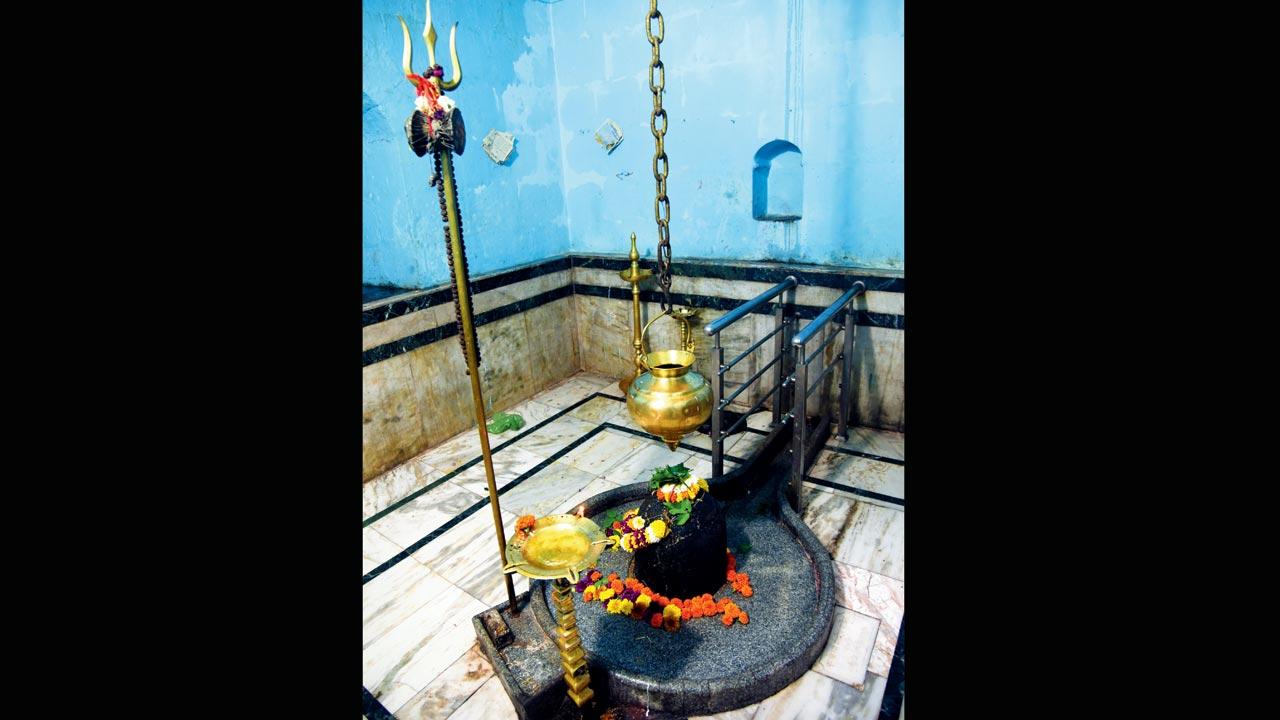 Locals attribute the emergence of a Shiva linga along with an idol of Lord Ganesh from below the earth in Pen, over a century ago, for the region’s tryst with idol making. Patneshwar Mandir was built at the site
Locals attribute the emergence of a Shiva linga along with an idol of Lord Ganesh from below the earth in Pen, over a century ago, for the region’s tryst with idol making. Patneshwar Mandir was built at the site
According to Patil, PoP is easy to work with, is durable, and best when large-scale production is involved. “One karigar can make 15 PoP idols in a day. The rubber moulds are also easy to use, and if there’s wear and tear, it can be fixed. The finishing is also great,” he claims. On the other hand, shaadu maati, which is natural clay found on the banks of rivers, and is mostly sourced from Gujarat, is fragile and requires skilled artisans. “In all of Hamrapur, there are only 50 karigars who work with shaadu maati, while those who work with PoP are in thousands,” Patil tells us.
 Anand Pendharkar
Anand Pendharkar
With the PoP ban looming for several years, we ask him why he hasn’t made the switch. Patil frowns, and takes us to a poorly-lit corner of his workshop, where a row of clay idols, a few broken and gathering dust, have been stacked one behind another, on a shelf. He shakes off the cobwebs on one of them. When he lifts it, we realise that the idol has split in half. Patil says these idols were made over the last two years, and most of them remain unsold. They are now lying in his karkhana, and he is yet to figure what to do with them. “Working with shaadu maati is difficult. You can hardly make one idol a day. If it breaks, our effort is wasted, because unlike PoP, you will need to remold clay. It’s also very heavy. You need at least 10 people to carry a life-size statue, and there’s no guarantee that it won’t crack during transportation. Who wants to bring a broken idol home? It can be demoralising for devotees, and reflects badly on us. The government is forcing us to make Ganpatis of clay, but mann nahin kar raha hai [I don’t feel like it]. There’s nothing in it for us.”
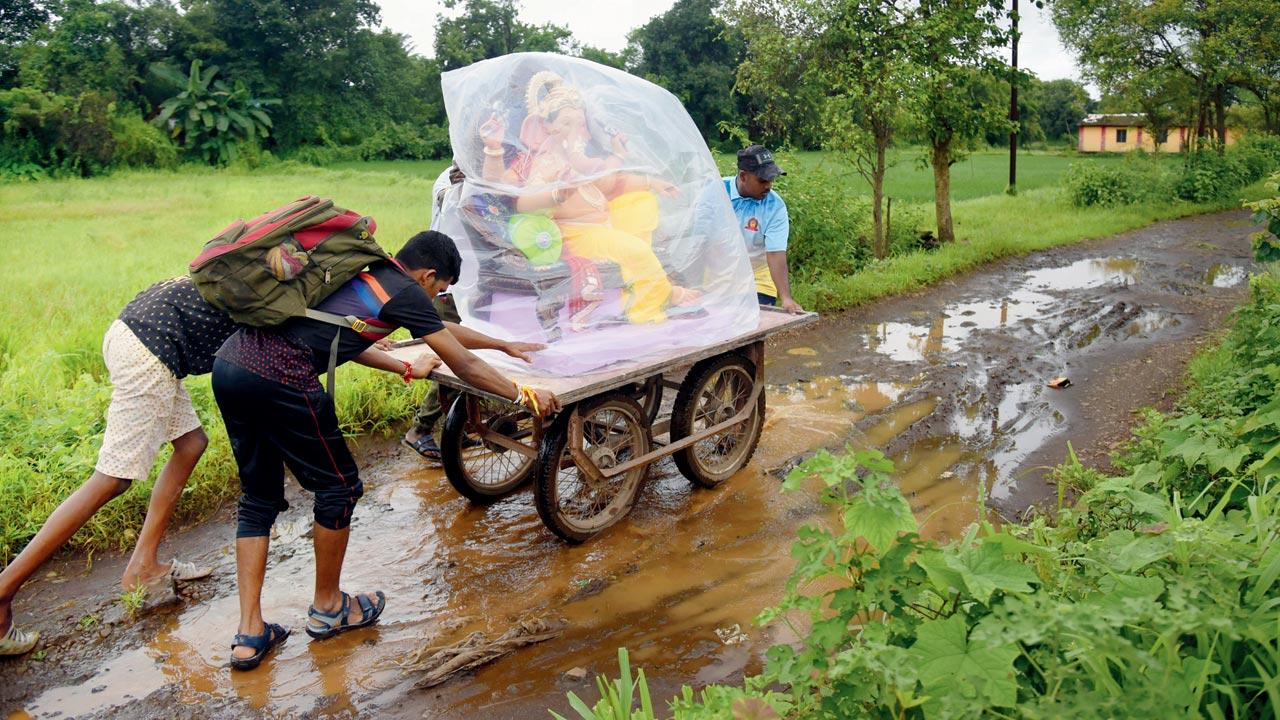 Customers push a cart with an idol from the workshop over a kaccha road in Hamrapur. The village, despite the financial stability of most idol makers, misses basic infrastructure. Artisan Sachin Bhagat’s hole-in-the-wall Chinese eatery was the only ‘restaurant’ we spotted on our day-long trip
Customers push a cart with an idol from the workshop over a kaccha road in Hamrapur. The village, despite the financial stability of most idol makers, misses basic infrastructure. Artisan Sachin Bhagat’s hole-in-the-wall Chinese eatery was the only ‘restaurant’ we spotted on our day-long trip
His sentiments are echoed by Ravikant Krishna ‘Abhay’ Mhatre, Maharashtra head of Sri Ganeshmurti Pratishtha, another idol-making association that is seeking relief in the case. “Currently, the PoP idol business supports 15 lakh people in Maharashtra. In Hamrapur alone, there are 15,000 karigars,” he says.
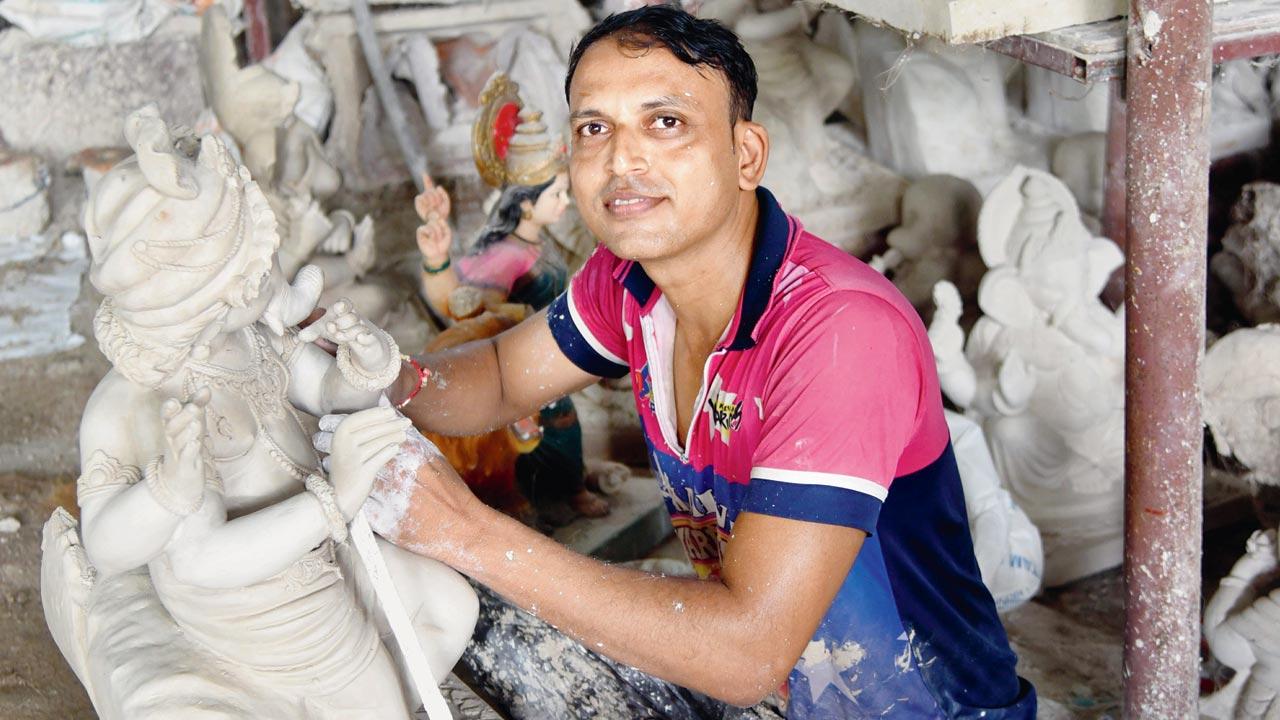 Mangesh Narayan Panchal, who works in Hamrapur, but hails from the neighbouring village of Kalave, has a BA degree. He chose idol making, due to a lack of professional work opportunities in Pen. Panchal spends his weekends in Kalave, where he continues to teach English to the local children, as it brings in extra income
Mangesh Narayan Panchal, who works in Hamrapur, but hails from the neighbouring village of Kalave, has a BA degree. He chose idol making, due to a lack of professional work opportunities in Pen. Panchal spends his weekends in Kalave, where he continues to teach English to the local children, as it brings in extra income
Thirty seven-year-old sculptor Mangesh Narayan Panchal, who hails from the neighbouring village of Kalave, has a BA degree. He chose the profession, due to a lack of work opportunities in Pen. “I was desperate to make money. I have been working in Hamrapur for the last eight years, and make around Rs 1.5 lakh each year,” says Panchal, who is also a private English language tutor. Panchal spends his weekends in Kalave, where he continues to teach English to the local children, as it brings in extra income.
Journalist Shinde, who moved to Hamrapur from Mira Road five years ago, says that the village is completely dependent on idol-making. “There is a lot of money coming in, but very little in the name of development, which is why people have no option, but to get into idol-making business.” Shinde’s son, Harsh Deepak Shinde, who has just completed a two-year diploma in pharmacy, was in Class VIII when he learnt to sculpt and paint Ganesh idols. “I make about 30 idols daily. If I work for three months, I make around Rs 50,000.”
Earlier this month, the Nagpur bench of the HC directed the state government and Maharashtra Pollution Control Board to submit a report on the impact of PoP, within three months. In a previous report submitted by the MPCB, following an order by the NGT in May 2013, it had been observed that apart from gypsum, paper (cellulose), materials like starch, boric acid, potassium sulfate, vermiculite, glass fiber, paraffin wax and crystalline silica are used. The study also highlighted that chemical colours containing metals like copper, chromium, cadmium, nickel, lead and mercury were used. The study concluded that “idols made of PoP are not easily soluble in water. Even after the 15th day of immersion, the PoP idols do not disintegrate/deform. Further, gradual disintegration of chemical constituents of PoP idols has shown steady increase in hardness... and reduction of dissolved oxygen in water. The large scale immersion of PoP idols may lead to gradual and persistent change of water quality, particularly in water bodies such as wells, ponds etc, having limited dilution factor, therefore, may have marked adverse impact on aquatic life as well as natural quality of receiving body of water.” Clay, as per the study, disintegrated within about 30 minutes.
Patil’s wife Anita Sanjay Patil who paints and decorates Ganesh idols is slowly making the switch to natural colours. She works with seven women, and has been a collaborator with her husband for the last 12 years. Her annual turnover is Rs 25 lakh. “Right now, we use plastic and chemical paints, but a corporate [as part of its CSR initiative] has approached us and we’ve started using water-based paint. We are willing to do anything that’s good for the environment, but it needs to be a workable solution. I avoid working with shaadu maati idols, because sometimes, even when painting them, they fall apart.”
Idol makers are staring at a complete ban on PoP next year. This, say villagers, could lead to mass unemployment in Hamrapur. But those who have made the switch to shaadu maati are not any better off. In fact, some like Sushma Deepak Mandlekar are facing destitution. Mandlekar’s workshop-cum-home, kept dry by tarpaulin sheets, is in a dingy alley. Not only is it hard to find, it’s beyond the reach of customers, who prefer to shop at bigger workshops on the main road. She is on WhatsApp, but networking is not her forte.
Mandlekar, 43, a mother of two girls, lost her husband five years ago. The day we meet her, August 17, is incidentally his fifth death anniversary. On our arrival, she perks up. She assumes we are customers, and places her pallu over her head, readying for a good bargain. Her disappointment shows, when she finds out we are not here to buy her idols. Her late husband Deepak Tukaram Mandlekar used to work as a karigar in Thane, before he decided to start his own shaadu maati idol-making workshop in his hometown in 2013. This is the time when the conversation around eco-friendly Ganeshas was picking up in Maharashtra. While one could say he had great foresight, it hardly brought in money.
Two years later, he suffered a stroke, one side of the body paralysed, the responsibility of manning the workshop fell on Mandlekar. She has an artisan working with her, when sales pick up. But, in the last two years, there have been none. When the pandemic struck, she spent all her days and nights creating clay idols. “I also took a R2 lakh loan from the bank to buy raw materials,” she says. In the last two years, she has made over 300 idols. Almost all of them are gathering dust on the shelves. “I have only sold five,” she says, dejected. “Clay idols require a completely different set of skills. And if you have to make a good piece, you need to spend an entire day on it. Finishing ke liye, time lagta hain,” she says, showing us the moulds, which she uses to make the shaadu maati idols.
“There’s no value for our work.” In January this year, she dared to make 10 two-feet sized idols. “I thought if I make bigger idols, they might sell. But I haven’t found a single customer for my work.” She has to pay Rs 40,000 to the bank with interest, and the date is nearing, “but I don’t have the money”.
Anand Pendharkar, ecologist and CEO of the SPROUTS Environment Trust, which has been spreading awareness about eco-friendly Ganeshas for the last 17 years, says enough isn’t being done to convince people to make the switch. “If eco-friendly Ganeshas are going to cost Rs 2,000 each, and PoP murtis are going to come at Rs 500, who is going to buy the expensive one?” Pendharkar has been looking for greener alternatives to the idols. In 2016, he and his team came up with small idols that contained fish food that would feed the fish in the sea, once the idols were immersed. He says that shaadu maati is not preferred because the chances of breakage is 40 per cent. “But PoP is non-biodegradable. In fact, back in 2003, we took up the cause, because we noticed that some of the broken idol pieces would wash ashore as late as January, over six months after the festival. If that’s not going to pollute the ocean, what is?” Pendharkar explains that shaadu maati is silt that comes from the rivers and settles in the creek. “When it settles on the sea bed, it becomes part of the soil, and plants grow on it. If you see our mangroves, you’ll realise that they grow on that.” He, however, warns against newer “unscientific” idol alternatives, like those made of alum. “Alum contains aluminium sulfate. It’s a toxic material. We use it to kill germs in the water. If you use alum, you risk poisoning. Even papier mache, though made from plant-based material, can take time to decompose.”
Mandlekar is one of the rare green warriors in Hamrapur, who is swimming against the tide. She tells us that though the clay idol business has failed to pick up, and her school-going daughters’ future continues to be at stake, she is far from disillusioned. And she won’t shift to making PoP idols. “Shaadu maati ka Ganpati accha hota hain. Woh humare liye hanikarak nahin hain [Clay idols are good for us. They are not harmful to the environment],” she insists.
15L
Number of idol makers across Maharashtra the PoP ban will affect
 Subscribe today by clicking the link and stay updated with the latest news!" Click here!
Subscribe today by clicking the link and stay updated with the latest news!" Click here!










